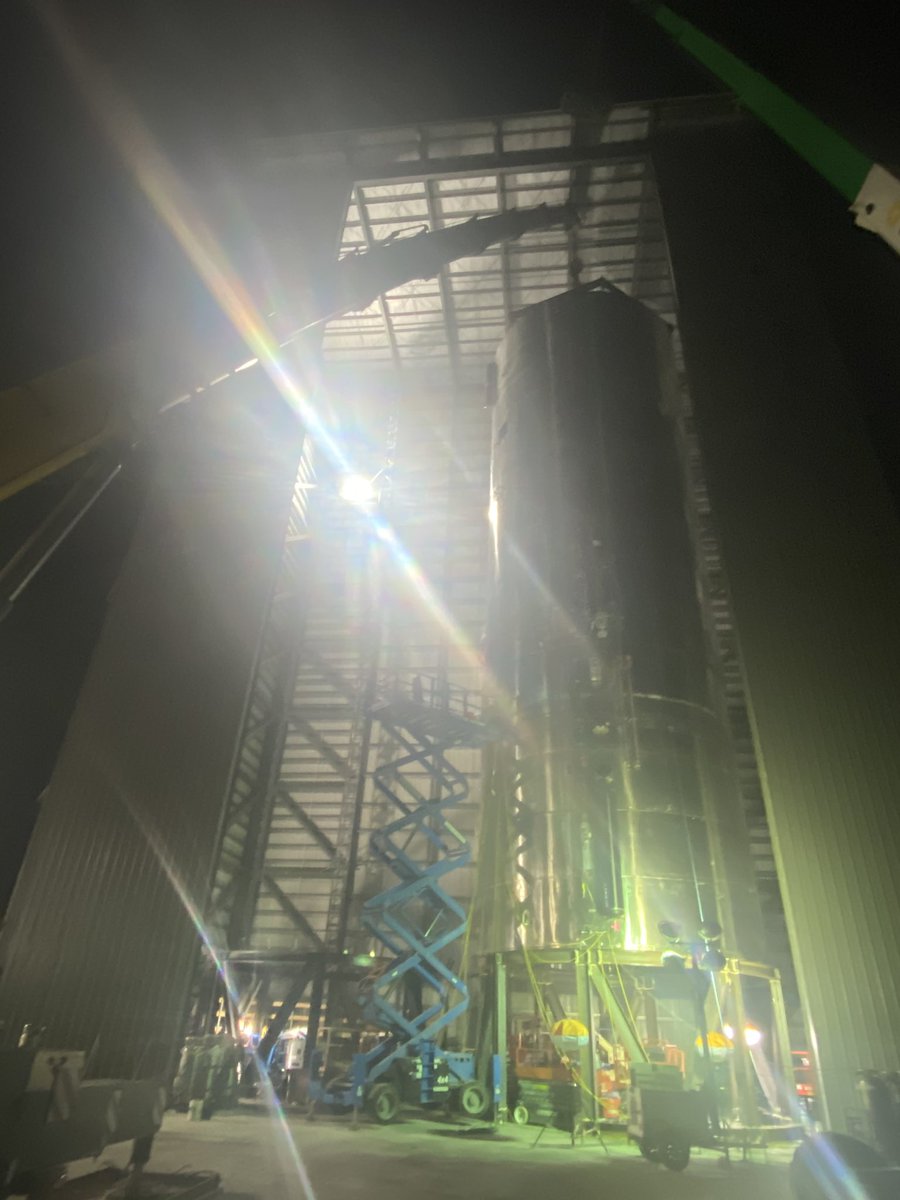
SpaceX's newest Starship prototype is standing tall.
The latest test version of the Mars-colonizing Starship spacecraft, called the SN3, has been stacked at SpaceX's South Texas facilities, new photos tweeted out by company founder and CEO Elon Musk show.
Musk posted two images on Twitter about 45 minutes apart early Thursday morning (March 26). The first shows the SN3's tank and engine sections sitting side-by-side in an assembly facility, and the second shows them joined. (Musk didn't provide much in the way of context, writing simply "SN3.")
Related: SpaceX's Starship and Super Heavy rocket in pictures
SN3 pic.twitter.com/bM1wzzd4ZgMarch 26, 2020
SN3 is short for Serial No. 3; the prototype is the third iteration of the latest Starship design. Completion of the stacking milestone suggests that SpaceX, which has been moving very quickly on the Starship project, will begin testing the vehicle soon.
Such testing will begin with pressure trials, which have felled other Starship prototypes. But if the SN3 makes it through that gauntlet, it will likely get to spread its wings. Musk has said he aims to conduct short flights in Earth's atmosphere with the SN3, then fly higher and longer test missions with the SN4.
Starship is designed to launch atop a huge rocket called Super Heavy, which will have space for 37 of SpaceX's next-generation Raptor engines. Both elements will be fully and rapidly reusable; Super Heavy will come back to Earth for vertical landings shortly after delivering Starship to orbit, and the spacecraft will do the same when its work is done.
Get the Space.com Newsletter
Breaking space news, the latest updates on rocket launches, skywatching events and more!
Some of this work will take Starship very far afield, if all goes according to Musk's plan. Starship will be capable of carrying 100 people to distant destinations such as the moon and Mars, he has said. And the Red Planet is the ultimate goal: Musk wants the Starship architecture to help humanity set up a million-person city on Mars in the next 50 to 100 years.
Starship won't need Super Heavy to get off the lunar or Martian surface, by the way. The final spacecraft will sport six Raptors of its own, which will provide enough power to lift off those planetary bodies. (Earth is much bigger than the moon or Mars and therefore has a much stronger gravitational pull.)
We could see Starship and Super Heavy flying operational missions very soon, if testing and development go well. SpaceX representatives have said the system could begin launching satellites to Earth orbit as early as next year. And Japanese billionaire Yusaku Maezawa has booked Starship for a crewed round-the-moon voyage, with launch targeted for 2023.
- SpaceX: Facts about Elon Musk's private spaceflight company
- Welders wanted: SpaceX is hiring to ramp up production of stainless steel Starship
- How living on Mars could challenge colonists (infographic)
Mike Wall is the author of "Out There" (Grand Central Publishing, 2018; illustrated by Karl Tate), a book about the search for alien life. Follow him on Twitter @michaeldwall. Follow us on Twitter @Spacedotcom or Facebook.
OFFER: Save at least 56% with our latest magazine deal!
All About Space magazine takes you on an awe-inspiring journey through our solar system and beyond, from the amazing technology and spacecraft that enables humanity to venture into orbit, to the complexities of space science.
Join our Space Forums to keep talking space on the latest missions, night sky and more! And if you have a news tip, correction or comment, let us know at: community@space.com.

Michael Wall is a Senior Space Writer with Space.com and joined the team in 2010. He primarily covers exoplanets, spaceflight and military space, but has been known to dabble in the space art beat. His book about the search for alien life, "Out There," was published on Nov. 13, 2018. Before becoming a science writer, Michael worked as a herpetologist and wildlife biologist. He has a Ph.D. in evolutionary biology from the University of Sydney, Australia, a bachelor's degree from the University of Arizona, and a graduate certificate in science writing from the University of California, Santa Cruz. To find out what his latest project is, you can follow Michael on Twitter.










